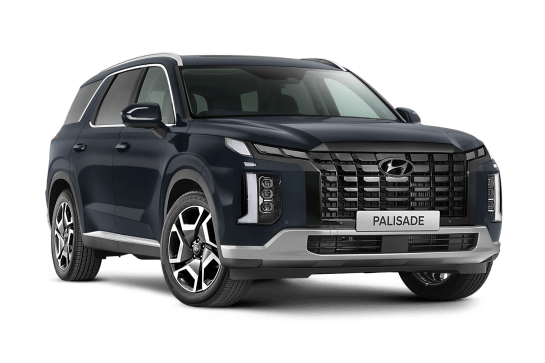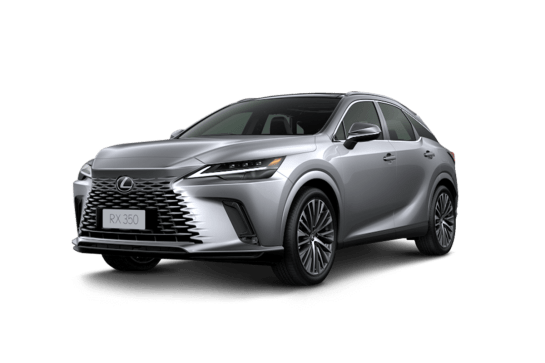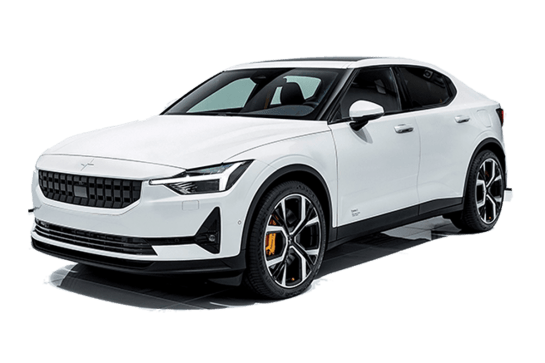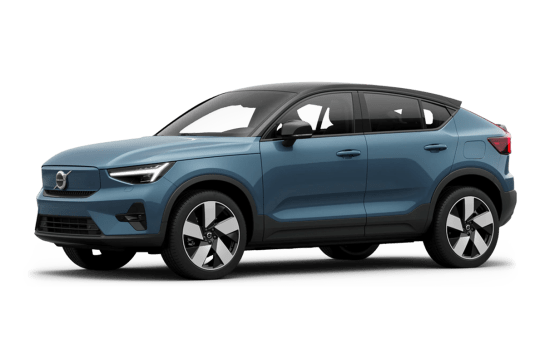
Audi Q5 VS Volvo C40
Audi Q5
Likes
- Sprightly performance
- Still a dynamic winner
- Spacious, well-crafted interior
Dislikes
- Loses cargo space over petrol models
- Cabin starting to date
- Driving range can’t match Lexus
Volvo C40
Likes
- Great charging and range
- Two well specified variants
- Impressive driving performance
Dislikes
- Single motor not as good value
- Seats could be more comfortable
- Rear seat space compromised
Summary
Audi Q5
Audi has had a mixed history with plug-in hybrids (PHEV) in Australia. Under its ‘e-tron’ banner it has launched PHEV versions of the previous A3 hatch, and the Q7 SUV, with limited success.
But the German marque believes the time is right to add plug-in power to one of its most popular models - the Q5 mid-size SUV.
With decent driving range and a packed standard features list, Audi is not messing around. But how does it stack up value wise against the already popular BMW X3 and Volvo XC60 PHEVs?
| Safety rating | — |
|---|---|
| Engine Type | — |
| Fuel Type | Electric Hybrid |
| Fuel Efficiency | —L/100km |
| Seating | 5 seats |
Volvo C40
Throughout its history Volvo has been known for a lot of things. Being a safety leader, dorky but endearing station wagons, ‘bloody Volvo drivers’, and more recently, a trailblazer in minimalist premium design.
The C40 is the first step in a next chapter for Volvo, with the brand wanting to be known next for its leadership in the electric space. For the first time for Volvo, it’s a fully electric offering
But in a world of Teslas, Polestars, and Mercedes Benz EQs, where does the C40 sit, and is it worth considering in an increasingly congested premium small SUV space?
We went to its Australian launch to find out.
Read more about
- How safe are the 2023 BYD Atto 3 and Volvo C40 electric cars? Two Chinese-built EVs score highly, but there's a catch with one...
- Best electric cars arriving in 2022
- Sick of waiting for a Tesla Model Y in Australia? Volvo could be about to eat its lunch as C40 Recharge orders open with 434km driving range and sharp pricing
| Safety rating | |
|---|---|
| Engine Type | — |
| Fuel Type | Electric |
| Fuel Efficiency | —L/100km |
| Seating | 5 seats |
Verdict
Audi Q57.9/10
It might be a late return to the PHEV game for Audi, but it’s an impressive one. Everything great about the Q5 remains - dynamically engaging, responsive powertrain - but you get the added benefit of electric power.
This could be the car to prove that plug-in hybrid medium SUVs don’t have to be bland family transport. If the Q5 is anything to go by, going green can be downright fun!
Note: CarsGuide attended this event as a guest of the manufacturer, with travel, accommodation and meals provided.
Volvo C408.3/10
The C40 becomes a compelling option in the electrified small SUV space, offering a premium look and feel, great range and tech inclusions at the price, as well as awesome on-road dynamics.
Its main downsides are the rear seat, which is compromised by its platform and design-led roofline, and the overwhelming power and added traction of the dual-motor makes the single motor less attractive on the value front.
Still, regardless of variant chosen, the C40 looks to offer a stand-out balance of price, range, and performance, against its traditional rivals and newcomers alike.
Design
Audi Q5
The second-generation Q5 has been around for six years, and it was very much an evolution of the original, but it still looks attractive in the metal. You couldn’t call it edgy, but it is handsome.
Both PHEV body styles get the S line exterior package as standard, which adds a unique honeycomb grille, S line bumpers front and rear, Audi Sport wheels and it borrows the rear spoiler from the SQ5.
While many will favour the swoopy Sportback body style, I think the Q5 is at its most arresting in SUV body style, bathed in the gorgeous 'District Green Metallic' paint. Stunning.
Inside, only the Sportback gains the S line interior, which includes a leather three-spoke steering wheel with multifunction, shift paddles and hands-on detection, Nappa leather upholstery with contrast stitching, and aluminium inlays. The SUV seats are leather-appointed.
It’s fair to say Audi’s interiors have modernised since the launch of this Q5 in 2017, but it’s still hard to fault. The multimedia screen jutting out the top of the dash is a little old school these days, but the materials and quality are top notch.
Volvo C40
Volvo has become a brand with a distinctive and consistent design language which embodies the kind of beautiful minimalism normally associated with Scandinavian brands.
I have always liked how Volvo says more with less design elements, with only gentle touches of chrome or gloss black, and a lack of over-the-top sporty pieces avoiding the temptation to over-sell the sporty potential of the brand’s range.
The C40 takes the small SUV formula, well established by its XC40 relation, and gets a bit weird and experimental. It’s slightly lower and has a more coupe-styled rear, with a strongly raked rear window giving it a sportier and more aggressive look than the rest of Volvo’s SUV range.
The styling is sold by an angular spoiler piece running atop the boot, and the rear light clusters have gone all minimalist, constructed of individual pieces rather than a single transparent housing, and they give a nod to the C30 hatchback which this car is the spiritual successor to, by name and nature.
The interior offers up no surprises, sticking to the formula Volvo has established across all of its current models. An effortlessly premium space with, again, a minimalistic dash dominated by the portrait touchscreen, the C40’s premium nature is confirmed by its finely patterned inlays, simple chrome pieces, and abundance of soft-touch surfaces.
The big upright vent fittings with clever rhomboid patterns on their adjustment dials are always a highlight piece of modern Volvos, and the pattern work is continued on the central volume adjust dial and even on the little rotating pieces of the light and wiper stalks. Clever.
Even the software is paired back on the multimedia suite and digital dashboard, with easy to use shortcuts and simple menus which suit the car.
Volvo might turn off some buyers with the more unconventional shape of the C40. But for those looking for a more traditional SUV it also offers the XC40 in the same two variants, and the Polestar 2 caters to those not looking for an SUV at all.
Practicality
Audi Q5
As - predominantly - a family hauler, the Q5 has always done well in the practicality stakes. And adding a plug-in hybrid powertrain hasn’t changed that. Although you do lose some boot space compared with the petrol models - but more on that in a bit.
Up front, the Q5 has plenty of nooks and storage slots in the console, including a longer shallow slot to hold phones. The central bin is deep enough and the door bins can swallow big bottles and more. Housing the phone charger on the top of another storage spot in the console works as it can be hidden by the larger storage lid for security.
As the Q5 is older than some of Audi’s fresher models, there are physical buttons for things like air conditioning, seat heaters, and controls for drive modes and other vehicle functions.
It might not look as schmick as having a screen to house everything, but from a practicality and safety perspective, it’s welcome.
This approach also extends to the multimedia system which is fairly simple to navigate with a logical menu. Audi’s system gets a tick, as does the digital cockpit - something the brand pioneered.
While the leather appointed seats in the SUV are nice, the quilted Nappa leather seats in the Sportback are much more luxurious. And the ‘Rotor Grey’ colour scheme is simply beautiful. They offer more than enough support in the front row and they are comfy without being super plush.
There’s ample leg and headroom in the front row.
That is the same for the second row. So much headroom even with a panoramic sunroof. And behind my 183cm (six foot) driving position, there was room to spare in front of my knees. It’s such a good size.
Also, the rear seats have some bucketing so passengers will feel a little spoiled. There’s also knee-level air vents, map pockets, two USBs and a 12-volt port, a fold-down armrest with cupholders and ISOFIX points on the outboard seats.
The rear row folds 60/40 and there’s decent room in the boot, which has a power operated tailgate.
Given some of the PHEV hardware sits directly under the boot floor, it’s little surprise that the SUV version (465 litres) loses 55L of space compared with the petrol-powered 45 TFSI.
Similarly, the Sportback (455L) drops by 45L. Also, despite the swoopy roofline, the Sportback only loses 10L of cargo space compared with the more practical looking SUV.
Those PHEV bits also mean there is no spare wheel - only a tyre repair kit.
Volvo C40
The C40 is essentially a XC40 with a cropped down roofline, and there are some obvious downsides which this new shape brings.
The front seat throws no surprises, though, offering plenty of room for two adults with a welcome level of adjustability for the seat and wheel. The seats could be more comfortable, though, with a notable lack of padding in the base compared to some luxury (or even non-luxury) rivals.
I’m a fan of the fabric trim which comes on both grades, bucking the trend of needing to have leather or leather-like trim for a car to feel ‘premium’.
The ample window space up front, including the massive glass roof helps the C40’s cabin feel spacious, but the view out the rear with its aggressive design is all but a very limited letterbox aspect, particularly if the rear seat headrests are in the upright position.
While some controls are exclusively via touch interface, there is a physical volume dial, and shortcut buttons for the defogger functions.
Temperature is controlled by touch, however, and the detail settings have some smaller toggle adjustments. Tricky to jab at when you’re on the move.
The digital dash is refreshingly simple, but minimally adjustable, with the choice of either a nifty navigation screen, a blank screen, or trip details being the only options.
Cabin storage is good but not stellar. There are bottle holders and big pockets in the doors, a set of two cupholders in the centre (beats the Polestar 2’s single cupholder), a small tray with a wireless charger under the multimedia screen, and a smallish console armrest box.
The rear seat is where the real problem exists. Unlike the XC40, the C40’s cropped roofline means my head was hard up against the roof (I’m 182cm tall).
I did have decent knee room behind my own seating position, however the seat comfort in the back still isn’t as good as some rivals.
The middle position is also compromised, thanks to the raised centre floor piece the C40’s platform needs to facilitate all-wheel drive in its combustion relations.
A bottle holder appears in each door pocket, and in a rare inclusion, there are heated outboard rear seats, adjustable air vents, and USB-C charging ports.
The boot has a quoted capacity of 413 litres with the rear seats up. The floor is comparatively high suggesting a smallish space when loaded with luggage cases, for instance. Stay tuned for a follow-up review so we can see how well it holds our three-piece demo set.
The floor itself has an adjustable, pop-up divider and multiple luggage hooks, making it quite versatile, and there is a cavity beneath which can hold your charging cables as well as the inflator kit in place of a spare wheel.
Price and features
Audi Q5
Dipping its toe back in the plug-in hybrid market, Audi is keen to appeal to buyers looking to reduce their carbon footprint, but also to driving enthusiasts requiring a bit of zing with their environmental credentials.
That’s where the Q5 55 TFSI e quattro comes in. Audi Australia had the option of introducing a less performance focused Q5 PHEV grade, but opted instead for the higher output model.
Audi sees this as the SQ5 you buy when you want to save the planet. And the 0-100km/h sprint time of 5.3 seconds suggests it’s pretty close.
Pricing for the 55 TFSI e quattro starts at $102,900, before on-road costs, for the SUV body style.
Opting for the Sportback carries a $7300 premium, making the price $110,200. But you get some more gear in the Sportback over the SUV, including the S-line interior package, and Matrix LED headlights with dynamic front and rear indicators.
Other equipment standard on both grades includes a panoramic sunroof, hands-free power tailgate, ambient lighting (with 30 colours), keyless entry and start, front leather-appointed seats with heating and power adjustment, three-zone climate control, a 10.1-inch multimedia touchscreen with wireless Apple CarPlay and Android Auto, digital radio, 10-speaker audio, auto-dimming interior mirror and 20-inch Audi Sport alloy wheels.
You can opt for different 20-inch wheels or 21-inch hoops as well.
The 'Technik' option pack costs $4900 for the SUV and $4700 for the Sportback and adds a head-up display, a more premium Bang & Olufsen audio system, and high-tech head or tail-lights, depending on the body style.
All in all it’s a healthy standard features list. I’ve said it before recently, but it’s worth repeating - it’s good to see premium brands including more standard features in their models, rather than making everything an option.
That said, maybe heated rear seats (as well as the standard front seats) might have been a nice addition.
So, how does the Q5 compare with its PHEV counterparts? Its most obvious rival is the BMW X3 xDrive30e which is more expensive at $111,800.
Then there’s the Range Rover Evoque R Dynamic HSE ($104,310) and Volvo XC60 Recharge ($101,990), which line up closely with the Audi, while the Lexus NX450h+ undercuts them all ($91,423).
Volvo C40
When it comes to electric vehicles, it’s impossible to consider price alone, as you also have to consider driving range, and the C40 manages to impress on both fronts.
Its refreshingly simplified range consists of just two highly-specified variants, a single motor which starts from $74,990, offering a 434km driving range, or a dual motor starting from $82,490 which offers a 420km driving range.
There’s much more devil in the detail, but to set the scene there are now quite a few direct rivals in this price-bracket, including everything from the Tesla Model Y (from $72,300), Mercedes-Benz EQA (from $78,513), Polestar 2 (from $63,900) and even the Kia Niro which is similarly sized and specified (from $65,300).
Interestingly, the C40 is closely related to the Polestar 2, but has a much higher base starting price. Volvo says this is because it carries a higher standard specification, and offers the C40 without option packs.
Standard gear on the base single motor C40 includes 19-inch alloy wheels, a 9.0-inch portrait multimedia touchscreen (running a Google-based always-online software suite), LED headlights, dual-zone climate control, a fixed panoramic sunroof, electrically adjustable front seats, heated seats for the front two and outboard rear seats, a powered tailgate, as well as keyless entry with touch-free ignition.
Interestingly, Volvo also told us some 90 per cent of customer interest so far has been for the more expensive dual-motor variant, which is particularly impressive for doubling the power output while adding 20-inch alloy wheels, a 360-degree parking suite, premium Harmon Kardon audio, and an alternate interior trim.
Both variants score safety equipment and items which are otherwise part of expensive option packs in the Polestar 2 range. We’ll take a look at the full safety gear later in this review.
Overall, the C40 impresses on the premium car value front compared to rivals, bolstered by solid range and impressive performance.
Under the bonnet
Audi Q5
The Q5 pairs a 2.0-litre four-cylinder turbo-petrol engine - found in many VW Group products - with a plug-in hybrid set-up that includes a lithium-ion battery pack and an electric motor.
The total system output is 270kW of power and 500Nm of torque, which is impressive. In fact, it has more power - but a little less torque - than the SQ5 performance flagship.
It drives all four wheels thanks to Audi’s quattro all-wheel drive system, and does that via a seven-speed dual-clutch automatic.
Volvo C40
Great news here, the C40 can be chosen with two powerful layouts, either a front-wheel drive 170kW/330Nm set-up, or a dual-motor all-wheel drive arrangement, able to make use of nearly double the power at 300kW/660Nm. The dual-motor is capable of sprinting from 0-100km/h in just 4.7 seconds.
The front-drive is backed by a 69kWh battery allowing it a 434km range, while the dual motor ups the battery size to 78kWh to allow a 420km driving range.
Efficiency
Audi Q5
The PHEV’s battery capacity is 17.9kWh and that ensures the Q5 has an electric driving range of up to 55 kilometres on the WLTP protocol.
Audi says the average daily commute of an Australian is 35km, so technically many people could get to work and back using electric power only.
It might not sound like a huge amount, but it’s more than the 41km offered by the BMW X3, although it doesn’t come near the Lexus NX’s 87km claim.
Energy consumption is rated at 23.9kWh/100km, and the official fuel consumption figure for the Q5 is 2.0 litres per 100km - bettering the X3’s 3.2L/100km figure but not as frugal as the Lexus (1.3L).
It has a 54-litre fuel tank and emits 45 grams per kilometre of CO2.
The Q5 PHEV has a Type 2 plug and comes with a charger to add more juice at home.
It has an AC charging capacity of 7.2kW and it will take two and a half hours to fully charge using a home wallbox charger. You can also plug it into a regular wall socket at home and it’ll be charged up in about eight hours, or overnight. It's not capable of DC charging.
Volvo C40
Surprisingly, energy consumption is quite high for both C40 variants. The single motor is the more efficient of the two, consuming 16.8kWh/100km on the more lenient ADR testing schedule, while the dual motor officially consumes 22.2kWh/100km to the same standard. I saw around 23kWh/100km overall in my short test of the dual-motor variant.
Energy consumption could be better for both, as I have achieved more consistently impressive results particularly from Hyundai and Kia electric cars.
Where the C40 is more impressive though is its charging specs, which are exactly where they need to be for a car this size. On a rapid DC charger, the C40 can charge at a rate of 150kW meaning a 10 - 80 percent charge in 40 minutes for the dual motor, or 32 minutes for the single motor.
On the slower AC standard, the C40 charges at a rate of 11kW. Expect a 10 - 80 percent charge time of around five or six hours on this standard.
The C40 uses a European-standard Type 2 CCS charging port, although it misses out on the handy two-way charging feature offered by some rivals.
Driving
Audi Q5
The Q5 has always been the driver’s pick among its peers - specifically the BMW X3 and Mercedes-Benz GLC. You could argue a Porsche Macan is more engaging and you’d probably be right. But of those immediate German rivals, the Q5 takes the cake.
Adding a PHEV powertrain and the circa-300kg of extra weight that brings should impact dynamics - but somehow, it doesn’t.
First of all, the Q5 PHEV can do the 0-100km/h dash in just 5.3 seconds which is hot hatch territory.
But the really impressive thing about this Q5 is how well it handles, despite that extra weight. The battery pack is housed under the boot floor, and Audi engineers have done a bang up job in ensuring it retains that dynamic prowess it's known for.
We drove on some delightfully twisty roads in the Gold Coast hinterland for this launch event, and the Q5 didn’t miss a beat.
It maintained composure when pushed into tight corners, and had plenty of grip. And the electric urge coming out of those corners - providing you have battery charge left - only helps the experience.
Typically sharp Audi steering is indeed present and welcome.
Riding on 20-inch Audi Sport alloy wheels, and with a sporty bent, you’d think the ride quality would be impacted. But that was another pleasant surprise.
The Q5 soaks up corrugations with the standard suspension set-up, and the tyres have a decent sidewall. So no unpleasant sharp bumps detected.
The cabin is reasonably well insulated from most outside intrusion as well.
Volvo C40
If you’ve driven any kind of XC40 or even a Polestar 2 before, the C40 will offer no surprises. It’s pretty much exactly the same from behind the wheel with a few subtle tweaks.
This is a very good thing. The C40 is quiet, easy to drive, and its electric motor and regen system offer a smooth single-pedal experience.
It is also alarmingly, overwhelmingly, rapid. While its massive set of batteries under the floor make it feel heavy off the line in stop-start traffic, sticking your boot into the accelerator will remove any doubt, particularly in the dual-motor variant, that this Volvo means business.
The dual-motor also has an incredible torque-vectoring system, making it extremely difficult to elicit so much as a squeak from its tyres. It also feels as though torque is distributed quite evenly between its two driven axles, making it feel neither prone to over- or understeer.
This has the effect of making the C40 feel somewhat indestructible in the corners, with absurd levels of grip.
The same feeling is present in top-spec versions of the Polestar 2, only the feeling of ever-present weight is more noticeable in the higher-riding C40, which can make it unsettling to take corners at the kinds of speeds it is capable of.
The steering tune is interesting. Volvo offers two software-controlled modes, either heavy or standard, and the standard mode is heavy enough.
Despite its electrical assistance, the wheel does continue to offer some organic feedback, making the C40 a pleasure to steer on countryside roads.
The ride is also surprisingly good, despite massive wheel options. I was impressed how easily the C40 handled most bumps and undulations, communicating little to the cabin.
The ride can approach its limits with such big wheels and the weight of its batteries, generally these are communicated via unsettling thuds from underneath the car. Regular undulations at higher speeds also had the C40 bouncing around a little.
On the whole, though, the cabin is kept relatively insulated and serene, adding an element of total confidence, similar to that offered by Teslas, whilst offering better ride quality with a softer edge. At higher speed, at least on the 20-inch wheels, road noise does pick up, however.
In terms of electric driving, there is a single adjustable setting for regen. The car either offers a full single pedal mode with maximum regenerative braking to bring the car to a halt with the motor alone, or a ‘standard’ mode which tones the regen down and offers it blended in via the brake pedal.
Single pedal mode is more efficient. I suggest you stick to it if you want to make the most of this car’s efficiency.
I was surprised to have so few complaints about the C40’s drive experience. This is a balanced and capable EV which is yet another example of how even vehicles which use combustion platforms are improved out of sight by full electrification.
Safety
Audi Q5
The Q5 plug-in counts an impressive level of safety gear, including eight airbags in total, although that does not include a front centre airbag.
It comes with the usual suite of driver aids, including Audi’s ‘pre-sense city’ system that activates emergency braking at speeds up to 85km/h, ‘pre-sense front’ emergency braking up to the Q5’s maximum speed, as well as attention assist, an active bonnet, a tyre pressure monitor, and hill descent control.
It also features adaptive cruise control, lane keep assist, blind spot monitor, safe exit assist, cross traffic alert and a 360-degree camera with an excellent display.
While the rest of the Q5 range is covered by a five-star ANCAP safety rating dating back to 2017, the Q5 plug-in hybrid remains unrated for now.
Volvo C40
Sticking to its brand promise, Volvo offers the full range of active safety equipment on the C40 regardless of variant.
This includes freeway-speed auto emergency braking, rear auto braking, lane keep assist with lane departure warning, blind spot monitoring with rear cross-traffic alert, and one of the best adaptive cruise control systems on the market.
The only item the single motor misses out on is a 360-degree parking camera, which is exclusive to the dual motor variant.
It is notable how the adaptive cruise control, blind spot monitoring rear cross-traffic alert, and rear auto braking are on the options list for the Polestar 2.
These active systems combined with eight airbags (the standard dual front, side, and curtain, as well as a driver’s knee and centre airbag) make for a five-star ANCAP safety rating to the latest 2022 standards.
Ownership
Audi Q5
The Q5 comes with Audi’s five-year/unlimited kilometre warranty. This was an increase on its previous term that Audi announced at the start of 2022. The PHEV is also covered by an eight-year/160,00km battery warranty.
Service intervals are every 12 months or 15,000km, whichever comes first, and Audi offers a capped-price service plan for five years that costs about $3500 all up. That’s a little pricer than BMW and Volvo’s plan.
Volvo C40
The C40 is covered by Volvo’s five year and unlimited kilometre warranty, with a separate eight-year, 160,000km warranty for the battery. There is also eight years of roadside assistance attached.
It is pleasing to see the service intervals for the C40 are long, as they should be for an electric car with so few moving parts, set at two years or 30,000km.
The first 24 month service is free of charge, and Volvo tells us service pricing after this period will average out to around $100 a year ($200 per visit).






































